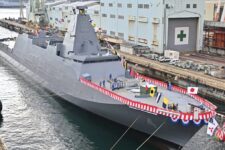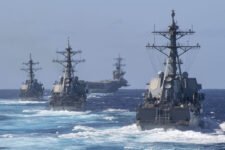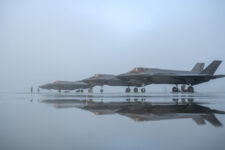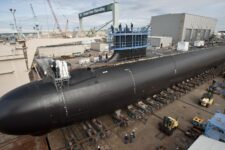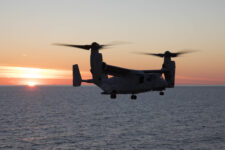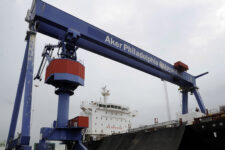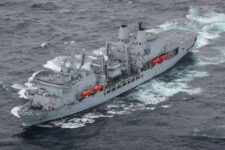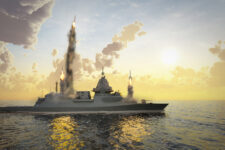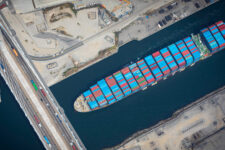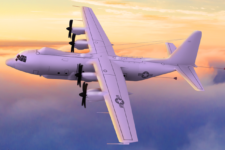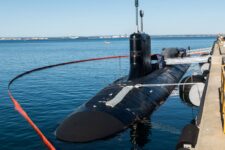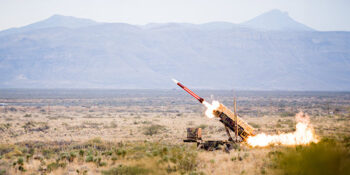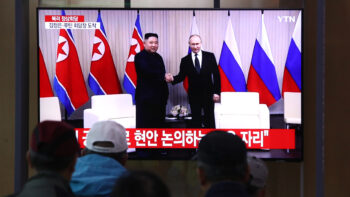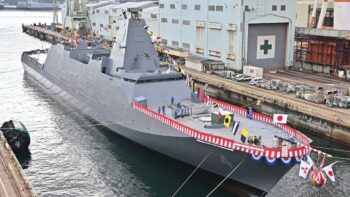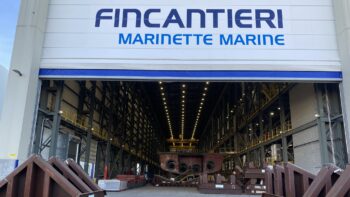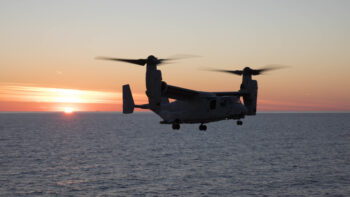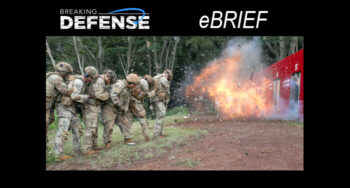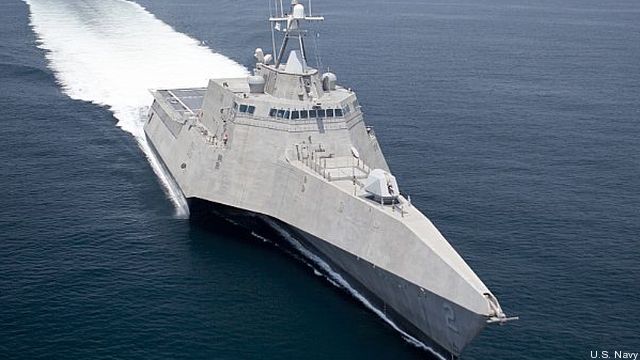
WASHINGTON: As Chinese and Filipino ships continue to face off in the disputed waters of the South China Sea, the Chief of Naval Operations acknowledged that the Navy’s prized new Littoral Combat Ship might not survive a shooting war against a well-armed adversary like China. But, Adm. Jonathan Greenert said this morning at a National Press Club breakfast organized by Government Executive magazine, the small, versatile vessel could free up larger warships from the day-to-day policing, presence, and partnership-building missions that are the best way to prevent a crisis from erupting in the first place.
“These are not large surface combatants that are going to sail into the South China Sea and challenge the Chinese military; that’s not what they’re made for,” Greenert said of the LCS class. Even the LCS contingent soon to start operating out of Singapore will focus on exercises, port visits, humanitarian assistance, and counter-piracy operations with Southeast Asian partners — taking that burden off the more war-worthy carrier, cruisers, and destroyers based in Japan.
Worldwide, said Greenert, “Littoral Combat Ships will tend to displace amphibious ships and destroyers in Africa and South America. That will free up surface combatants, more high-end ships,” for East Asia. The Navy already deploys half its available at-sea vessels in the Western Pacific, about 50 ships on an average day but currently up to 54, largely in response to the looming North Korean missile test. The plan is to go up to a baseline “WestPac” presence of 58 ships by 2020 as more of a planned 55 Littoral Combat Ships come on line.
So while the LCS will be the Navy’s most numerous future class, it won’t be much of a warfighter. No less an authority than the Pentagon’s independent Director of Operational Test & Evaluation has officially warned that “LCS is not expected to be survivable in a hostile combat environment.” That’s despite the Navy having significantly toughened survivability standards in the middle of building the first two vessels, retrofitting improvements at a major cost in time and money. All that work simply brought the LCS up from commercial survivability standards to what the Navy calls “Level I,” equivalent to existing minesweepers, patrol boats, and supply ships, which are expected to last long enough for their crew to get out alive if the ship is damaged but not to keep on fighting after they take a hit. Destroyers and carriers, by contrast, are Level III.
“I don’t worry per se about its survivability where I would intend to send it,” Greenert said of the LCS. “You won’t send it into an anti-access area.” That is, the LCS shouldn’t venture into waters where American military “access” is jeopardized by weapons such as shore-based missiles, small attack boats, and mines, the very threat that is the focus of the Navy and Air Force “AirSea Battle” concept.
That’s a particularly ironic problem since the LCS is intended to take over the long-neglected missions of clearing mines, of which the Chinese have about 100,000 — and for which the relevant LCS equipment module is still in somewhat troubled development — and of defense against swarms of small boats, a favorite Iranian tactic. In fact, LCS evolved from the late Vice Adm. Art Cebrowski’s “Streetfighter” concept for a frankly expendable ship to operate in wolfpacks ahead of more valuable vessels as the fleet tried to take apart anti-access defenses close to shore (which is where the word “littoral” came from). This morning, Adm. Greenert instead talked about groups of two or three Littoral Combat Ships going into sweep mines under the cover of an Aegis destroyer.
So what is LCS good for? It’s critical to remember that the Navy doesn’t spend most of its time fighting — that in fact it has not fought a major naval battle since World War II — but rather on patrols, policing, port visits, and partnership-building exercises where a small ship can serve as well as a more battle-worthy and accordingly more expensive vessel. The current stand-off in the South China Sea, for example, involves not warships but Chinese maritime surveillance vessels opposing the Philippine flagship Gregorio del Pilar, which was originally built in the US not for the Navy but as a Coast Guard cutter.
On that crisis, the CNO tried to strike a delicate balance between confrontation and conciliation. The US and its Asian partners must stand ready to “confront” the Chinese when they trespass on international norms, Greenert said, but the real solution is to prevent a crisis in the first place through quiet confidence-building — including the kind of low-profile partnership and presence missions for which the Littoral Combat Ship is suited.
Imagine a timeline of an international incident, with the lead-up on the left side, the precipitating incident in the center, and the crisis on the right. “You deal with the right [side] stuff by confronting them,” said Adm. Greenert in response to a question from Breaking Defense. “You don’t just drive away and cede the territory.” That requires the US and its allies to establish a track record of consistent and uncowed responses to Chinese provocations. “[We] work together with constant protocols with the Japanese, the South Koreans, the Australians, [and] all those folks,” he said, “so we operate consistently down there and stay the course.”
But an ounce of prevention is worth a pound of war, Greenert emphasized. On that before-and-after crisis timeline, “getting to the left is the answer,” he said. “There is a way to co-exist in the South China Sea, I am convinced of it. It has to start really with deliberations with each other,” including “mil-to-mil” exchanges between US, Chinese, and other East Asian militaries. “The answer really is to listen to each other.” Right now, he lamented, we don’t necessarily hear the Chinese very clearly. “The more I talk to people who are really smart about the Chinese and their strategy,” Greenert said, the more he believes that “the translation of what they say is not done very well.”
Clarified at 3:20 pm to remove misleading explanation for the increased number of US ships in the Pacific. The original version of this article said the Western Pacific force was “currently up to 54 in response to the current South China Sea crisis and the looming North Korean missile test”; the Navy is in fact not deploying ships specifically in response to the Sino-Philippine stand-off over Scarborough Shoal.
The terror of war, a helo crash mystery and the business of defense: 5 Middle East stories from 2024
From eye-witness accounts of the Israeli invasion of Lebanon to a rare appearance of Iranian weapons at a foreign arms expo, there’s a selection of Breaking Defense’s Middle East coverage.

